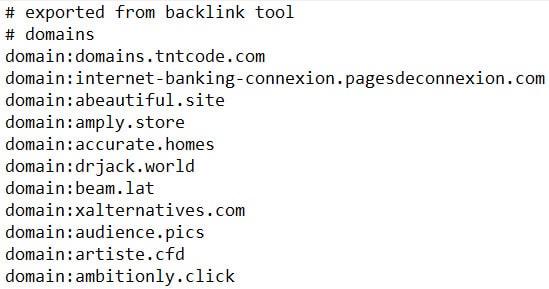
How to Disavow Links to Your Site?
Maintaining a clean link profile is essential to improving your website’s ranking in the complex world of SEO.
One tactic for maintaining a healthy site is disavowing unwanted links.
This guide will help you identify, prepare, and submit your disavow file to improve your site’s link profile.
Understanding Disavow Links
Disavow links are essentially a list of external links that you inform search engines, like Google, to ignore when assessing your site.
These could be spammy, artificial, or low-quality links that might penalize or harm your site’s SEO standing.
Disavow links are essentially a list of external links that you inform search engines, like Google, to ignore when assessing your site.
These could be spammy, artificial, or low-quality links that might penalize or harm your site’s SEO standing.
Identifying Harmful Links
You should be able to identify detrimental links when you need to.
Utilize tools such as Google’s Search Console, Ahrefs, or SEMrush to pinpoint the questionable links.
Look for patterns like irrelevant site themes, spammy link practices, or links from penalized sites.
Preparing Your Disavow File
Your disavow file should be a plain text (.txt) document listing the URLs or domains you wish to disavow, one per line. To disavow an entire domain, prepend it with “domain: “for instance, “domain:example.com.”

Submitting Your Disavow File to Google
Navigate to the Google Disavow Tool in your Google Search Console and select your site. Upload your disavow file and submit it. This process is straightforward but should be handled carefully, as improper use can negatively impact your SEO.
After Submission
Post-submission, it’s a waiting game. Monitor your site’s performance and rankings closely through analytical tools and observe any positive or negative shifts.
Risks and Considerations
Disavowing links willy-nilly can do more harm than good. This tool is meant for clear-cut cases of toxic links. When in doubt, seeking professional SEO advice is prudent. Speak to HypeX SEO specialists!
Maintaining a Healthy Link Profile
Regular audits of your link profile are essential. Engage in ethical link-building practices and keep an eye out for any suspicious link activities to preempt the need for disavowing.
Conclusion
Navigating the waters of disavowing links need not be daunting. With the right tools and a judicious approach, you can ensure your site sails smoothly towards SEO success.
FAQs
What is a disavow file?
- It’s a file you submit to search engines listing the links you want ignored in evaluating your site’s quality.
How often should I disavow links?
- Only when you notice many harmful links pointing to your site. Regular monitoring can help decide.
Can disavowing links hurt my SEO?
- If done incorrectly, yes. It’s essential to be sure the links you disavow are harmful.
How long does it take for disavow to take effect?
- It varies, but generally, search engines process requests in a few weeks to a few months.
Should I disavow links from spammy but high-DA sites?
- If those links are artificially or inappropriately gained, they can harm your site’s reputation and SEO.





